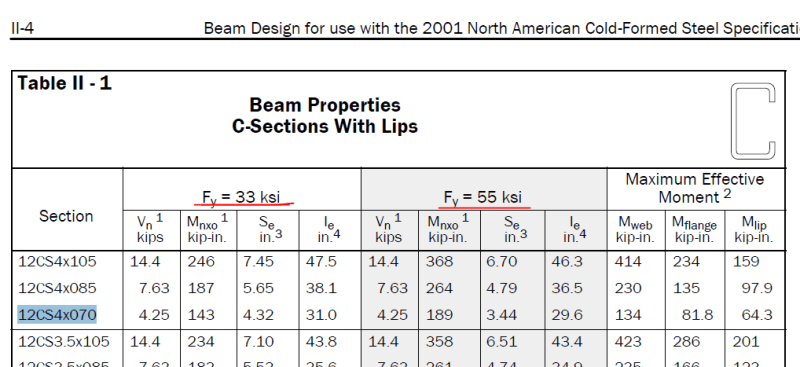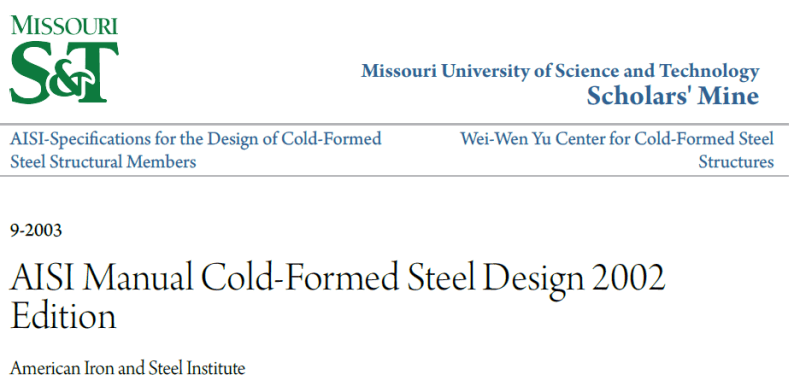tramyer
Structural
- Nov 2, 2018
- 4
Hi,
I wanna ask if cold form is limited only to gr.33 and gr.55?
Because upon seeing the AISI Manual Cold-Formed Steel Design 2002
Edition.
Especially how they calculate the effective sections. Was based only to gr.33 and gr.55. Is that true?

And in addition, I just wanna ask why they used 37.25 ksi (Why they didn't use the Fy which is 55 ksi) as compression force was that only an assumed value?

Cause I'm new to AISI and currently studying it.
thank you for those who will comment out there suggestions and their opinions.
Below is the reference pdf file.

Kind regards,
I wanna ask if cold form is limited only to gr.33 and gr.55?
Because upon seeing the AISI Manual Cold-Formed Steel Design 2002
Edition.
Especially how they calculate the effective sections. Was based only to gr.33 and gr.55. Is that true?

And in addition, I just wanna ask why they used 37.25 ksi (Why they didn't use the Fy which is 55 ksi) as compression force was that only an assumed value?

Cause I'm new to AISI and currently studying it.
thank you for those who will comment out there suggestions and their opinions.
Below is the reference pdf file.

Kind regards,
